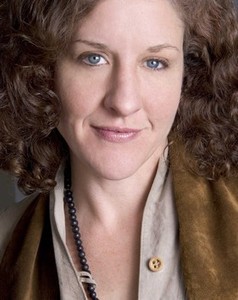 How can the social enterprise sector navigate the challenges of working with global corporations? That was the challenge set forth for discussion by I-DEV International at SoCap 2013 with I-DEV Director and Partner Patricia Chin-Sweeney opening the panel and featuring speakers from Google, FSG and Unilever.
How can the social enterprise sector navigate the challenges of working with global corporations? That was the challenge set forth for discussion by I-DEV International at SoCap 2013 with I-DEV Director and Partner Patricia Chin-Sweeney opening the panel and featuring speakers from Google, FSG and Unilever.
One important tip: be clear about what you are looking for. Are you seeking funds as a foundation or are you selling corporations a distinct product or service? Why should they be interested in your idea? Knowing who you want to talk to and what you want to talk about also came up as critical pieces.
Unilever: Experimenting with Social Enterprise
For Unilever, water is a critical concern, social enterprises focused on water conservation and replenishment as well as waste streams and water-related products make important partners. Unilever as an organization looks at social enterprises as an experiment to explore distributing, not just water, but also other related products – thus breaking down silos and serving as a bridge to build deeper relationships.
Unilever also set up a separate entity run by an NGO partner in order to have more flexibility and authenticity. Yet it was important that the team be clear about its goals. There had to be a revenue model and constituents needed to be okay with that. They needed to be willing to allow Unilever to use the corporate network as an experiment in social venture.
Astutely, FSG‘s Managing Director FSG’s Lalitha Vaidyanathan noted the divisions that occur when these  concepts congregate. At Nestle for instance, the aggregation point is nutrition and water. For Verizon it is via its foundation, whereas for GE it is solely a business venture.
concepts congregate. At Nestle for instance, the aggregation point is nutrition and water. For Verizon it is via its foundation, whereas for GE it is solely a business venture.
So how do the business partnerships happen?
GE: Going Outside the Box to Enable Impact
GE has a $6 billion fund for health innovation. In India, the GE incubator looks at infant mortality. Toggling back and forth between ideas and solving needs, in 2009 GE worked with the Indian government “to save newborn lives at Bangalore’s Vani Vilas hospital with its Lullaby infant warmer technology.” Yet, the cost—$20,000—made it impractical and unaffordable in a country where most infants are born with midwives.
When even a price reduction of 90 percent – down to $2,000 – was not enough for the Indian market, the company decided in 2011 to partner with Embrace, the makers of a blanket warmer. Integrating Embrace into its value chain was a challenge for GE and one that required thinking outside the box but helped solve a dire need without significant cost.
Google: Easier to Create Problems First
For both corporations like GE and Google the investment needs to be quite large. But according to Google’s Head of Partnerships Scott Coleman, the technology giant looks at philanthropy and social venture a tad differently. “We want to fund organizations doing good things that hopefully have a tech component to them,” he said. To keep things clear, it is critical to know what your end goal is, how you plan to measure its success and what it’ll take to achieve it. Then, find alignment within the company.
He explained that for Google it is often better to come with a problem than find the solution, like Earth View, which started with a set of problems. Partnerships, therefore, become much more innovative and forward-looking.
However, Daniel Jacobs, Senior Director of Strategy at Saatchi & Saatchi S, noted that a greater understanding of social good had also brought with it greater disparity in purchasing guidelines making it difficult for companies to stay focused on issues versus their business.
For FSG’s Vaidyanathan, the question also boils down to what is competitive and  what is precompetitive. As Jacobs explained, when you approach the organization you are looking to partner with you must develop an understanding of how to meet their needs. Speaking to several people in an organization can give you the information needed to align in a positive way.
what is precompetitive. As Jacobs explained, when you approach the organization you are looking to partner with you must develop an understanding of how to meet their needs. Speaking to several people in an organization can give you the information needed to align in a positive way.
Yet, expansion can come with greater need. As Rick Kellett, director of programs and investments at the Aga Khan Foundation stressed, to increase access to education, competence puts tremendous demand on bringing more services to the area, which leads to more questions around impact. Is supporting education and technology helping raise the capacity of all programs? Is their impact local and humanitarian?
As FSG’s Vaidyanathan of FSG put it, “Getting to scale is critical. If it is going to take a while, it is good to start with something other than nothing.”
________________________
LEARN MORE
Follow us, http://Twitter.com/NobleProfit
Like us, http://Facebook.com/NobleProfit
Register at http://NobleProfit.com to gain valuable insights in related topics.
Noble Profit is brought to you by http://CreativeEntity.Org
Creative Entity Productions http://Creative-Entity.com
Created by Amy Seidman

 Noble Profit™ is an authentic source for discovering innovation, trends and investment in clean tech, and sustainable business.
Noble Profit™ is an authentic source for discovering innovation, trends and investment in clean tech, and sustainable business.